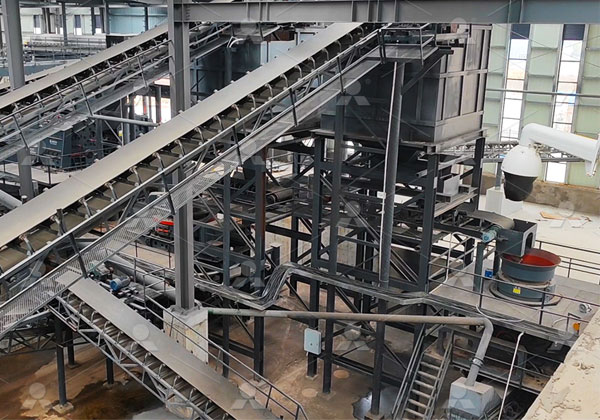In the realm of construction materials, basalt aggregate has gained prominence for its durability and excellent mechanical properties. As demand for high-quality aggregates continues to rise, the design and implementation of efficient crushing production lines become paramount. This article delves into the intricacies of a 350 TPH basalt aggregate crushing production line, exploring key considerations, equipment selection, and process optimization.

Equipment Selection:
- Primary Crushing: The primary crusher plays a pivotal role in the success of the production line. A robust jaw crusher with high capacity is essential to handle the initial crushing of large basalt rocks. Consideration must be given to factors such as feed size, crushing ratio, and the ability to handle abrasive materials.
- Secondary Crushing: Following primary crushing, a secondary crusher further reduces the basalt into smaller sizes. Cone crushers or impact crushers are commonly employed for their efficiency in producing well-shaped aggregates. The choice between them depends on factors like the desired product shape, particle size distribution, and production capacity.
- Screening and Classification: To achieve the desired particle size distribution, efficient screening and classification are crucial. Vibrating screens with multiple decks can be employed to separate different-sized aggregates, ensuring the final product meets specifications. High-capacity screens enhance production rates.
- Material Handling: An efficient material handling system is vital to minimize downtime and maintain a steady flow of material. Conveyors, chutes, and feeders should be designed to handle the abrasive nature of basalt and facilitate smooth transitions between processing stages.
Process Optimization:
- Closed-Circuit Operation: Implementing a closed-circuit system allows for the efficient recirculation of oversize material back to the crusher. This not only maximizes the production of desired-sized aggregates but also reduces the need for additional crushing stages, optimizing energy consumption.
- Automation and Control Systems: Incorporating advanced automation and control systems enhances the precision and efficiency of the production process. Real-time monitoring of equipment, automated adjustments, and data analytics contribute to improved reliability and performance.
- Dust Suppression: Basalt crushing generates significant dust, posing environmental and health challenges. Efficient dust suppression systems, such as water sprays or fog cannons, should be integrated to mitigate airborne particles and create a safer working environment.
- Regular Maintenance and Inspection: Preventive maintenance is essential to ensure the longevity of equipment and prevent unexpected breakdowns. Regular inspections, lubrication, and timely replacement of wear parts contribute to sustained production efficiency.
The design and operation of a 350 TPH basalt aggregate crushing production line demand careful consideration of equipment selection and process optimization. Efficiency gains can be achieved through advanced automation, closed-circuit operation, and robust material handling systems. Furthermore, prioritizing environmental sustainability ensures that the production line aligns with industry standards and contributes to a more responsible and eco-friendly construction materials sector.
